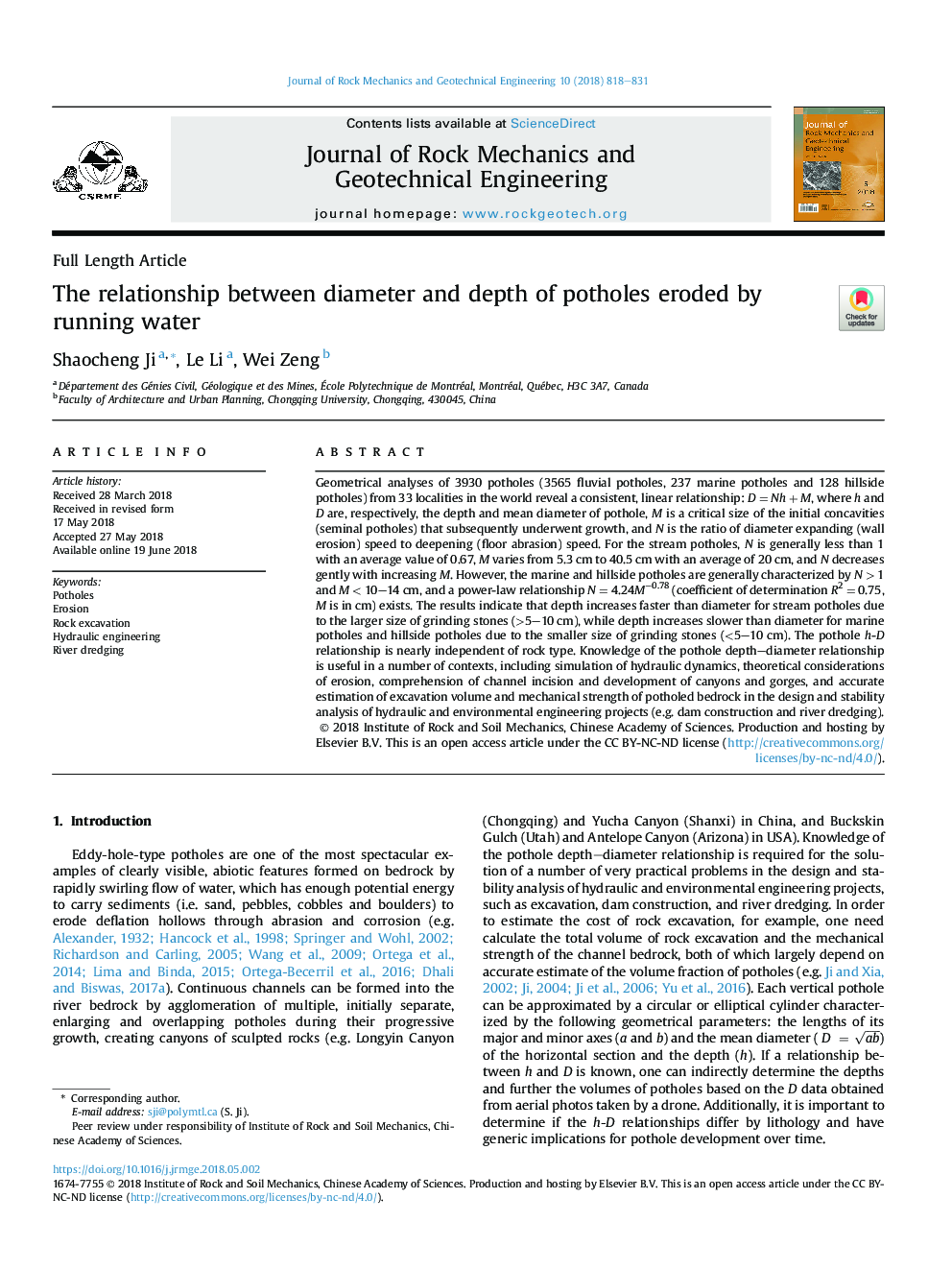| Article ID | Journal | Published Year | Pages | File Type |
|---|---|---|---|---|
| 11017521 | Journal of Rock Mechanics and Geotechnical Engineering | 2018 | 14 Pages |
Abstract
Geometrical analyses of 3930 potholes (3565 fluvial potholes, 237 marine potholes and 128 hillside potholes) from 33 localities in the world reveal a consistent, linear relationship: D = Nh + M, where h and D are, respectively, the depth and mean diameter of pothole, M is a critical size of the initial concavities (seminal potholes) that subsequently underwent growth, and N is the ratio of diameter expanding (wall erosion) speed to deepening (floor abrasion) speed. For the stream potholes, N is generally less than 1 with an average value of 0.67, M varies from 5.3 cm to 40.5 cm with an average of 20 cm, and N decreases gently with increasing M. However, the marine and hillside potholes are generally characterized by N > 1 and M < 10-14 cm, and a power-law relationship N = 4.24Mâ0.78 (coefficient of determination R2 = 0.75, M is in cm) exists. The results indicate that depth increases faster than diameter for stream potholes due to the larger size of grinding stones (>5-10 cm), while depth increases slower than diameter for marine potholes and hillside potholes due to the smaller size of grinding stones (<5-10 cm). The pothole h-D relationship is nearly independent of rock type. Knowledge of the pothole depth-diameter relationship is useful in a number of contexts, including simulation of hydraulic dynamics, theoretical considerations of erosion, comprehension of channel incision and development of canyons and gorges, and accurate estimation of excavation volume and mechanical strength of potholed bedrock in the design and stability analysis of hydraulic and environmental engineering projects (e.g. dam construction and river dredging).
Related Topics
Physical Sciences and Engineering
Earth and Planetary Sciences
Geotechnical Engineering and Engineering Geology
Authors
Shaocheng Ji, Le Li, Wei Zeng,
